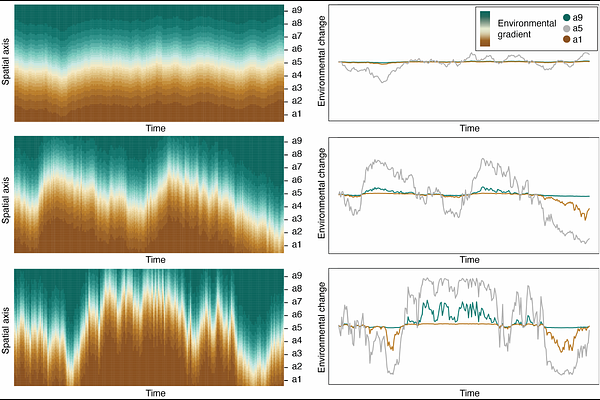Environmental fluctuations trigger faster evolution and turnover

Environmental fluctuations trigger faster evolution and turnover
Duchen, P.; Salamin, N.; Silvestro, D.
AbstractBiodiversity patterns and species communities emerge from the interactions between organisms and their environment and from processes spanning across different spatial and temporal scales. Understanding the dynamics of these interactions remains diffcult as it requires mapping how microevolutionary processes scale up to macroevolutionary outcomes. Here, we use an individual-based simulation framework to model how populations respond to environmental fluctuations in a spatially explicit context. Our approach tracks evolutionary processes over thousands of generations to quantify the emerging macroevolutionary patterns under varying degrees of environmental instability modeled as shifting environmental gradients. We found that increased instability across time and space leads to elevated rates of species-level extinctions leading to homogenization of species communities, while promoting high rates of phenotypic evolution. Emerging extinction patterns indicate a selective process where species with low migration ability, narrow environmental tolerance, and limited evolvability are disproportionally affected by phases of rapid environmental change. Understanding the impact of environmental variation on organisms and species evolution remains challenging but can be explored through simulations to generate expectations and testable hypotheses about evolutionary processes across different scales.